Watercolor painting is a hugely creative medium – and one of the most affordable paints on the market.
Even beginners can pick up a brush and produce vibrant paintings in just a few minutes, but it takes time and experience to get the most out of your watercolor paints. There are always new techniques and tips to try, which can take your art in an entirely new direction.
Understanding your materials and how to use them will help you to develop and improve as an artist, from selecting the right paper to choosing the best watercolor paints. In this guide, we’ll explain what you need to start watercolor painting.
Sometimes the toughest part of being a watercolor painter is just deciding what to paint – we’ve got you covered there too! We’ll look at watercolor painting ideas that you can enjoy whether you’re a novice or an experienced painter.
If you’re an experienced painter looking to boost your skills, we’ll cover some fun ways to break out of a creative rut too.
Read on to learn more about this fabulous medium!
Follow the links below to jump to a section of this guide:
- How do you start watercolor painting?
- Frequently asked questions about watercolor
- What common mistakes can be made when watercolor painting?
- Watercolor painting techniques
- Watercolor painting tutorials
- Watercolor painting materials
How do you start watercolor painting?
To start watercolor painting, you only need a few things: watercolor paints, paper, brushes and a pot of water. These can easily be found in art or craft shops, or even supermarkets.
This is part of the reason why watercolor painting is so accessible: it’s really easy to get your hands on the materials.
Once you’ve got paints, you can either experiment with your materials in a playful way, or track down some resources to learn some simple watercolor techniques. These days, there are lots of fantastic guides and video tutorials online to teach you how to use watercolor paints for free.
Alternatively, if you’d like more personal tuition it’s a good idea to look for art classes in your area so you can get advice from an experienced teacher.
Our watercolor painting for beginners guide is a good place to start your painting journey, as it covers what you’ll need to get started as well as some simple techniques to try.
What is the easiest thing to paint in watercolor?
When you’re new to watercolor painting, one of the best ways to build your confidence is to follow a step-by-step tutorial. This will help you to avoid some of the common mistakes that beginners make. You’ll pick up some expert tips at the same time too!
If you’re looking for an easy watercolor project, flowers are a brilliant place to start. They’re simple to paint if you use a loose painting style and can look surprisingly professional.
Try our easy flower painting tutorial to paint some natural-looking poppies.
Frequently asked questions about watercolor painting

What are the rules for watercolor painting?
There are no hard and fast rules, but knowing a few essential tips can make all the difference to how your watercolor paintings turn out.
Here are three rules to keep in mind:
1. Work from light to dark
In watercolor painting, it’s recommended to add light colors first and gradually introduce darker tones. This is because of the translucent nature of watercolor paints – if you add darker paints first, you can’t make them lighter.
This is the complete opposite of acrylic painting, where you typically work from dark to light.
2. Don’t add too much water
If your paper is too wet, it can often buckle and bend out of shape, spoiling the look of your finished painting. Choosing the right watercolor paper can help to prevent this.
3. Don’t use every color in your palette
Finding harmony in your colors is an important part of watercolor painting. It can be tempting to use lots of colors, but opting for a limited palette can often be much more effective.
Check out artist John Lovett’s watercolor tips for beginners to learn how to work with a limited palette.
Why is watercolor painting so difficult?
When you make mistakes in watercolor painting, it can be difficult to correct them. If you were using acrylic paints or oils then you could paint over the top to hide the mistake, but that’s often impossible to do with watercolors. It’s not a very forgiving medium!
If things go wrong, you usually have to embrace the error and make it part of the work or try to conceal it.
Beginners often struggle to use the right amount of water or paint, but with a little patience anyone can become a successful watercolor artist.
Do you need to sketch before watercolor painting?
You don’t have to, but it can help you to get the proportions right in your painting. Just be aware that some pencil marks may still be visible if you paint over the top.
Some artists prefer to get to work without an initial sketch – it’s all a matter of personal preference!
Paint a stellar watercolor galaxy
Create art that’s out of this world with our easy watercolor galaxy painting tutorial. This guide includes both steps and a handy video to follow.
Do you paint the background first in watercolor?
Some artists like to add a thin layer of color onto their paper to serve as a background, but this is optional.
In watercolor painting, it can often be very effective to leave some of your painting white, allowing the paper to shine through. This is something to consider when you’re planning the composition of your painting.
What common mistakes can be made when watercolor painting?
There are a few errors that beginners often make when working with watercolors. Here are some common mistakes and how to fix them (or prevent them from happening in the first place):
1. Too much water
This is an easy mistake to make – you apply a wash to your page or a sweep of the brush and the paper is saturated.
It’s a good idea to keep some kitchen towel or paper towels on hand for when you use too much water. You can use it to soak up the excess water and salvage your painting.
You can also use a technique called ‘lifting’ to remove some of the water. To do this, dab the painting with a dry brush and then wipe away the excess water on a paper towel. This can also be used to lighten your painting if you’ve applied too much paint in one go.
2. Muddy colors
If you use too many colors together, your paintings can end up looking muddy and dull. Try to use a more limited palette of colors to stop this happening in the first place.
3. Unwanted runs
When you’re painting two colors next to each other, they can run together if the paint hasn’t fully dried. Sometimes watercolor artists use this technique deliberately, but it can be very irritating if it wasn’t what you’d intended.
To avoid this, it’s sometimes worth leaving a section of your painting to dry while you work on another area. Be patient and wait until the paint has completely dried before painting another color alongside it.
4. Buckling paper
Watercolor paper is designed to absorb a lot of moisture, but even the thickest makes can buckle. To prevent this, tape your paper down to the table while you work.
5. Not knowing when to stop (or stopping too soon)
When you’re enjoying a painting session, it can be easy to end up adding too much paint and overworking your artwork. Knowing when to stop is very important.
Keep stepping away from your work to get a sense of how it looks overall. If you’re unsure whether it’s finished, try showing the painting to someone else and asking them if they think it looks complete.
6. Fixing unwanted marks
Sometimes an accidental smudge or drop of paint can spoil the look of your painting. If you can, try to quickly dab away the paint with some kitchen towel. This won’t remove the mark completely, but will make it less noticeable. Often the best thing to do is to paint over the top or try to conceal the mistake in some way.
You can cover the mistake with a little white acrylic paint or gouache, but this may not hide it completely.
Watercolor painting techniques
Every artist can benefit from brushing up on a few watercolor painting techniques. Most painters will have come across terms such as 'wet in wet' or 'dry brush', but there’s so much more to watercolor painting than that.
For example, there are lots of clever ways to add texture to your art, such as sanding away the paint or applying salt to make intriguing patterns. Even experienced artists can still pick up new tricks along the way!
Explore our watercolor painting techniques to unleash your creativity.
What to paint with watercolors?
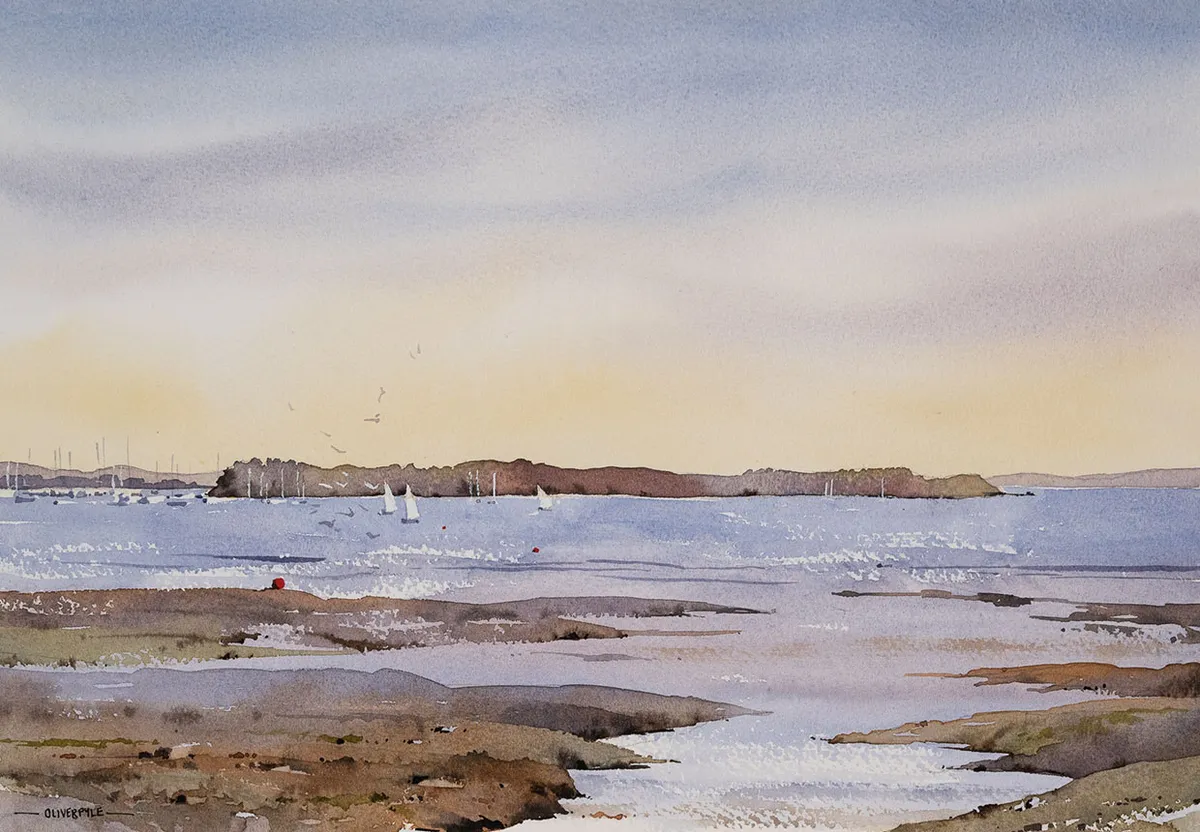
Once you’ve stocked up on watercolor supplies, you’re keen to start painting. But where to begin?
Here are three great watercolor ideas to inspire you…
1. Easy watercolor paintings
There are times when you just want something quick and easy to paint. We’ve put together a selection of beautiful watercolor ideas for you to try, from dreamy galaxies to misty mountains.
2. Landscape watercolor painting
Landscape watercolor painting is a real skill, so it’s a good idea to learn from the experts. Professional artist Oliver Pyle has created a spectacular tutorial showing you how to paint a watercolor landscape step by step. It’s packed with expert tips and advice too!
3. Watercolor portrait painting
Discover how to create a vibrant watercolor portrait with help from Rhiannon Bull. In this tutorial, Rhiannon guides you through the painting process from your initial sketches to adding the final details.
Watercolor painting tutorials
Not everyone has the time or funds to attend a painting class to improve their skills, so finding a good online lesson can be a great alternative. You have the freedom to choose what you study and can easily fit it into your day.
Online classes also give you access to a huge choice of teachers from around the world, so you can learn from the best. Although a lot of courses are aimed at beginners, there are plenty available for more advanced painters too.
Take a look at some of our favourite online watercolor classes to find the right one for you.
Watercolor painting materials
Understanding your materials is a crucial part of becoming a strong watercolor artist. In this section, we’ll explain everything you’ll need to make incredible paintings with a few recommended products.
Watercolor paints
Watercolor paints come in two forms: tubes or pans. The tubes contain watercolor paints in liquid form, which you can dilute with a little water.
Watercolor pans are solid blocks of paint, which remain dry until you apply water to reactivate them. Pans usually come in watercolor sets and you can easily replace them if you run out of a particular color.
Watercolor tubes have richer colors and are more suitable for large paintings. However, the paints can dry up and get stuck inside the tube if the lid isn’t tightened enough.
Pans, on the other hand, tend to be more portable and are ideal for painting when you’re out and about. They’re more suitable for beginners too. You just need to take care to keep them clean to keep the colors bright (check your brush isn’t dirty before you apply it to the paint!).
The cheapest watercolor paints can be poor quality, so we’d recommend looking for paints aimed at students for your first set. These tend to be good quality and more affordable than professional-grade paints. Many art shops also sell own-brand watercolor paints, which can be a great option for artists on a budget.
Look for well-known brands such as Winsor and Newton, Daler Rowney, Kuretake (popular with illustrators), Sennelier, Schmincke, Royal Talens and Caran d’Ache. There’s a huge variety of paints available and it’s worth trying different ones if you’re able to.
If you’re a more experienced artist or a professional, it’s definitely a good idea to invest in a higher quality set of paints. These are more richly pigmented and you’ll definitely notice a difference in the quality.
Take a look at our best watercolor paints guide to find the right set for your budget, or try one of our recommended paint sets below.
Daler Rowney Aquafine travel watercolor set
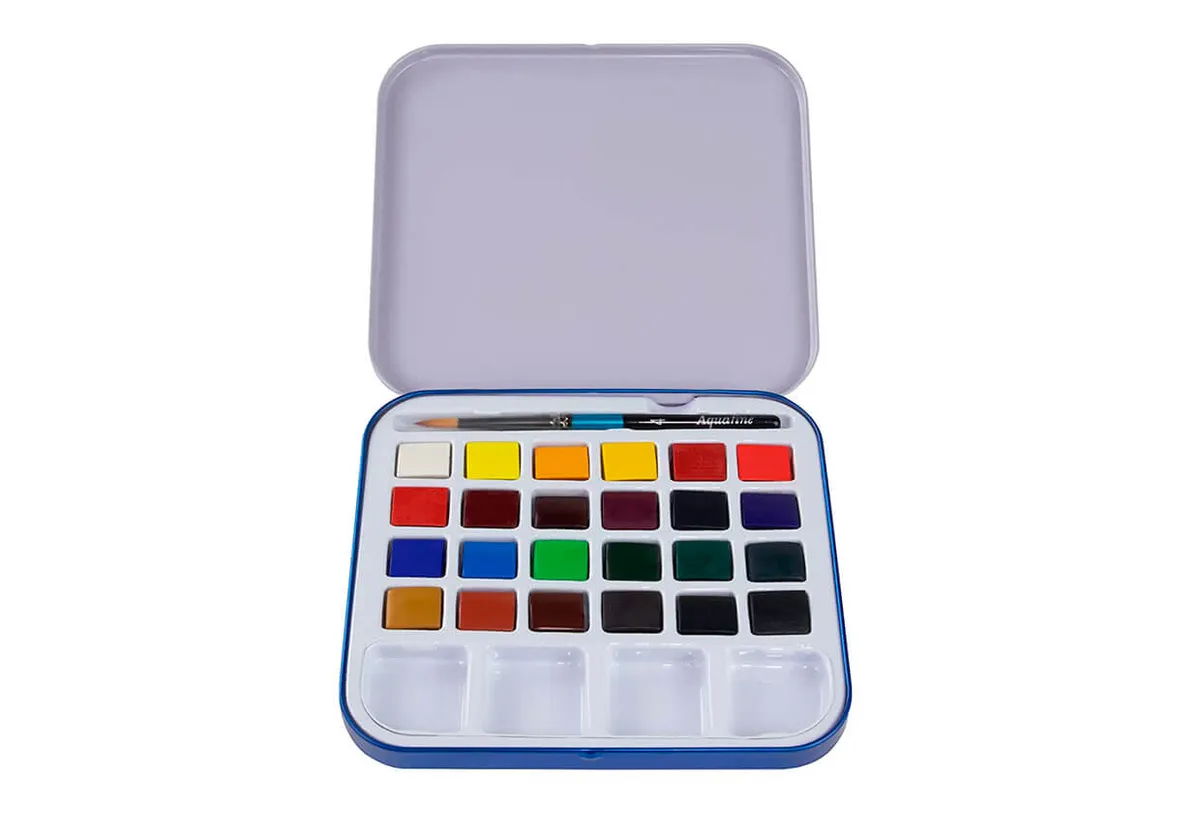
This compact watercolor paint set from Daler Rowney’s Aquafine range is perfect for beginners or artists who like to paint when they’re out and about. Its size makes it highly portable and it even includes a small watercolor brush.
This set contains 24 half pans of paint, so you’ll have every color you need right at your fingertips. The paints are lightfast, so they should stay bright over time without fading. These paints can also be used in combination with Daler Rowney’s gouache paints or inks.
Winsor and Newton professional watercolor set
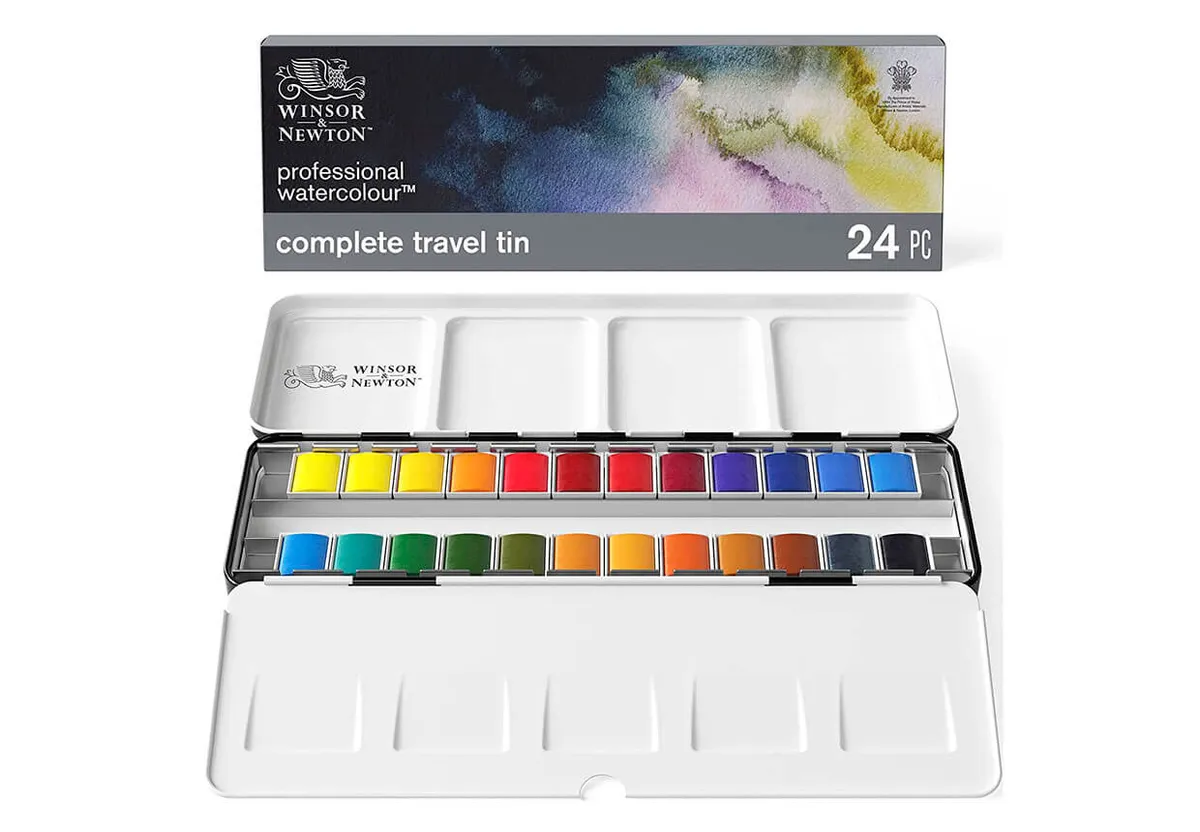
If you’re a professional artist or an amateur with a larger budget, we’d recommend investing in some Winsor and Newton professional watercolors.
These paints are wonderfully luminous and highly pigmented. You’ll notice a real difference in your paintings if you use this set. There are 24 colors included, so you can paint to your heart’s content.
These colors will stay looking brilliant over time, as they’ve been designed to last. It comes in a sturdy tin to protect your paints wherever you choose to take them.
Watercolor pencils
Watercolor pencils can be used for shading techniques like a normal colored pencil, but when you add a little water the pencil marks dissolve and turn into watercolor paint.
They’re like the perfect cross between drawing and painting! It’s difficult to get rid of the pencil marks entirely when you’re using watercolor pencils, so they can’t replace watercolor paints altogether.
Watercolor pencils are a useful addition to any artist’s kit and are a fantastic option if you’d like to combine drawing and painting.
Explore our watercolor pencils guide, which includes tips and techniques to try in your art.
Here’s a good pack of watercolor pencils to experiment with:
Derwent Academy watercolor pencil set

Get into watercolor pencil art with this set from Derwent. It’s part of the brand’s Academy range, so it’s inexpensive but still excellent quality.
This set contains 12 vivid watercolor shades to explore, which dissolve easily with just a dab of water. They can also be used as normal coloring pencils, but adding water really brings the colors to life.
These watercolor pencils come in a robust metal tin, so they can be stored safely or you can take them with you on your travels.
Watercolor pens
Watercolor pens combine the best qualities of markers and paints, making them an excellent addition to your art stash.
These pens can be used for more accurate drawing and blended with just a drop of water.
If you’re feeling stuck in a creative rut, playing around with watercolor pens can help you to break out of your comfort zone.
Learn more about watercolor pens by reading our informative guide and get started.
Ecoline watercolor brush pens

This set of Ecoline watercolor pens contains a selection of vivid shades to suit all of your projects. The inks blend well to create eye-catching watercolor effects.
Get used to working with this small pack and see if you’re hooked – if you love working in this medium, larger packs of pens are also available.
Watercolor paper
Watercolor paper is designed to be thick and absorbent, meaning that you can apply a lot of water before it starts to warp out of shape. If you’re using watercolor paints, it’s much better to use watercolor paper than mixed media paper, which tends to be thinner.
There are two main types of watercolor paper: cold pressed and hot pressed. Hot or cold refers to how the paper was manufactured. Hot pressed paper is smoother and better for finely detailed paintings, while cold pressed paper has a more textured surface.
You can learn more about the types of paper and how to use them in our watercolor paper guide .
Langton hot pressed watercolor paper
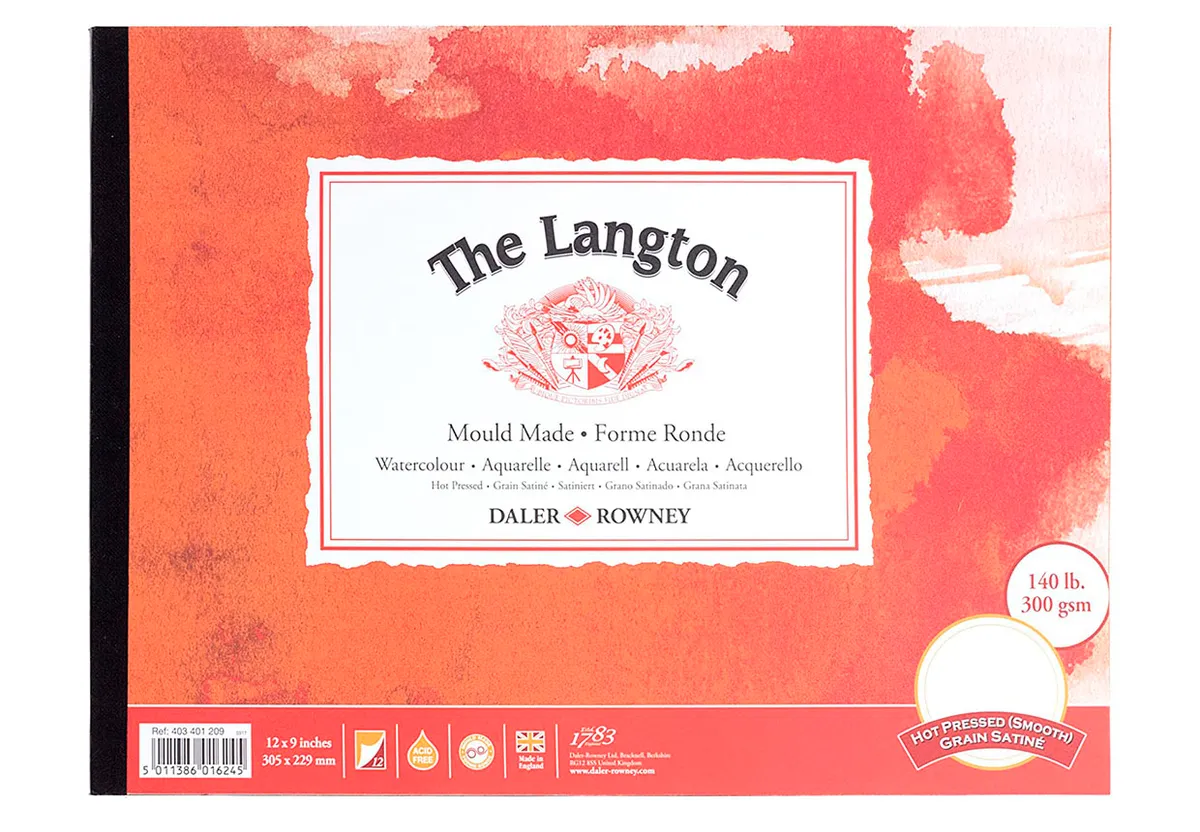
This smooth Langton hot pressed watercolor paper has a sleek surface that’s great for intricate paintings.
The paper is 300gsm thick, which means it is absorbent enough to suit the needs of most watercolor painters.
It’s archival quality paper, so it will help to preserve your paintings for years to come.
Daler Rowney cold pressed watercolor paper
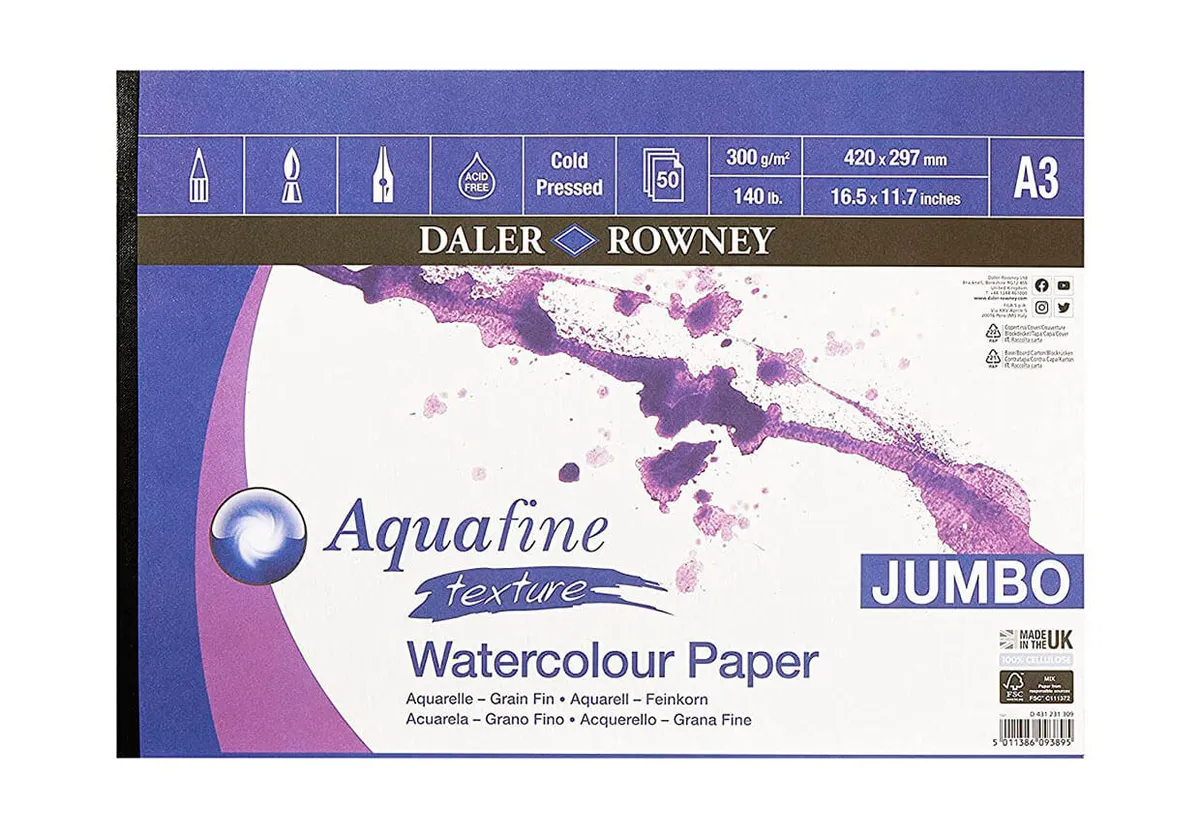
If you prefer using watercolor paper with a rougher surface, cold pressed watercolor paper is ideal.
This pad from Daler Rowney has 12 sheets of thick watercolor paper, which is suitable for both beginners and professional artists.
It’s acid free to protect your paintings and keep them looking great in the future.
Watercolor brushes
Watercolor brushes come in a variety of shapes and sizes, so it’s worth trying them out to see which types suit your painting style.
Traditionally watercolor brushes were made using sable, which is hair from the tail of the kolinsky (a kind of weasel). However, today there are lots of great synthetic alternatives such as sablene, which you can use to get the same results.
It’s a good idea to invest in a pack of watercolor brushes that includes a variety of brush styles. There are lots of fantastic options available for all budgets.
We’d recommend that you also buy at least one fine-tipped paint brush, because there are often times when you want to add a tiny fleck of paint or thinner brushstrokes. Watercolor brush packs aren’t guaranteed to include a fine brush for detailed work. Invest in a good quality fine brush and take care of it!
Here’s an excellent watercolor paintbrush set to help you get started.
Winsor & Newton Cotman watercolor brushes
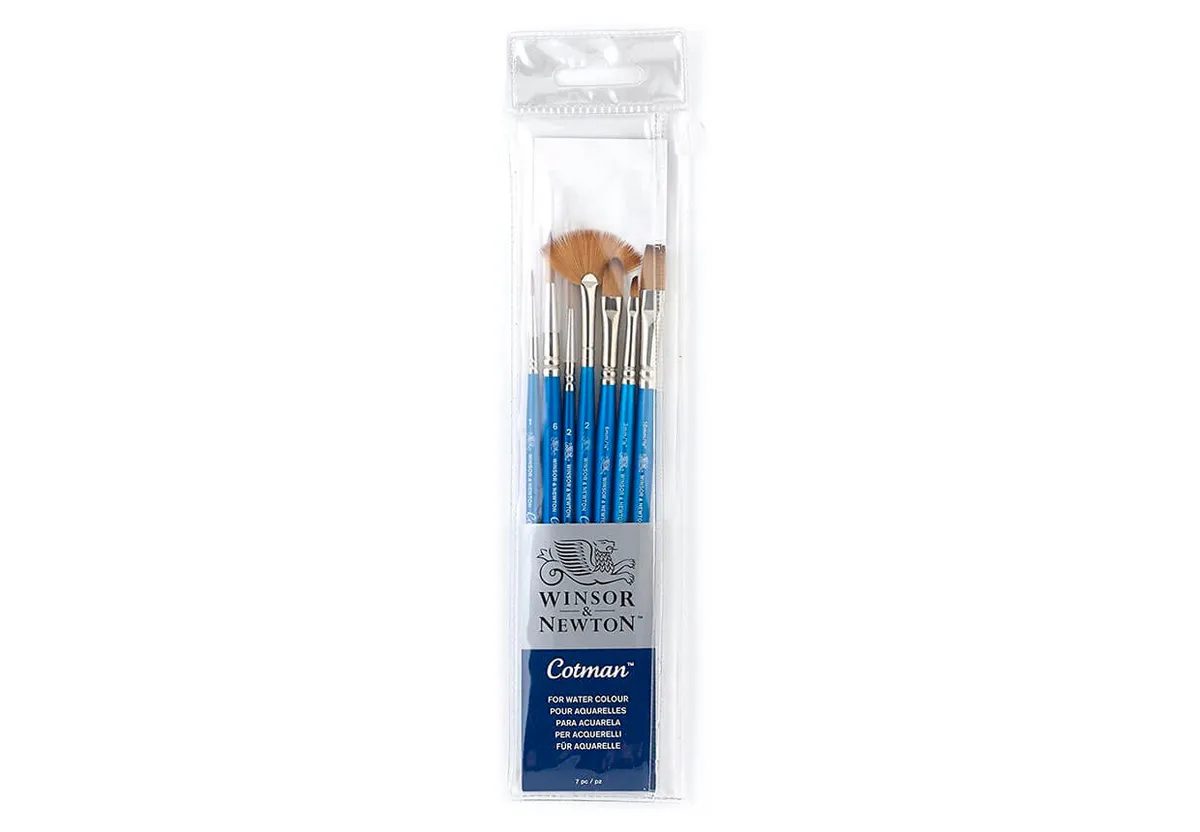
This watercolor brush set from Winsor & Newton is a fantastic buy, as it contains a range of brush shapes. There’s rounded brushes, a rigger brush for painting lines, an angled brush for detailed work and a filbert brush for broad sweeps of paint.
The brushes are short-handled, so they’re comfortable to paint with and easy to store when not in use.
Watercolor mediums
Watercolor mediums can be added to your paints to change the texture of your paintings. They can be used to make paints more translucent, to add a pearlescent sheen or to give your work a granulated look.
Mediums are more commonly used in acrylic painting techniques, but they can be a lot of fun to experiment with.
There are a lot of different watercolor mediums to explore. For example, gum arabic will make your paint glossier and slow down the drying process, while granulation medium can be used to give your paints a mottled appearance.
Masking fluid is one of the easiest watercolor mediums to try. It is made using rubber latex, meaning that it can be peeled off the page once it’s dry without damaging your painting.
To use masking fluid, paint a design on your paper then go over the top with watercolors once it has dried. When the watercolor paint is dry, you can remove the masking fluid to reveal the paper underneath. This can be used to create fascinating layered effects in your watercolor painting.
Get started with our recommended masking fluid below…
Daler Rowney Aquafine masking fluid

This handy little bottle of masking fluid is just what you need to transform your art and shake up your painting style.
It dries quickly and can easily be rubbed away when you’ve finished painting (with an eraser, cotton bud or piece of soft tissue).
Watercolor accessories
Paints, brushes and paper are the basic materials that you need to start watercolor painting. However, adding a few extra pieces of kit to your art supplies can make life a lot easier.
Here are some optional painting supplies that could improve your work:
1. Artist’s masking tape

Masking tape can be used to secure your paper to a table and create crisp borders on your paintings. Look for tape that’s specifically designed for artists where possible, as it’s low tack (less sticky). This means that it’s less likely to rip the paper when you remove it.
You can also reduce the tackiness by pressing the tape against another surface (such as a table top) before using it.
2. Sponge
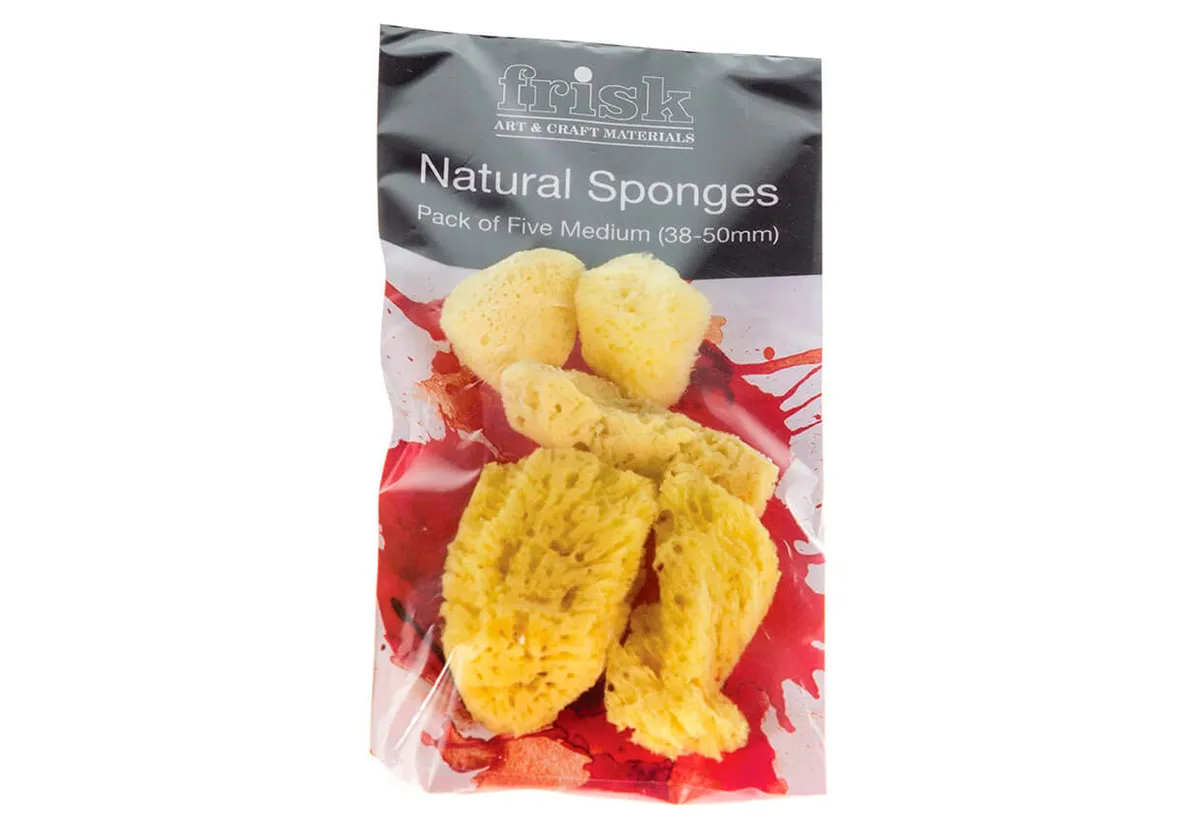
Sponges can be dabbed onto your paper to create interesting textures in your work. You can use a watercolor sponge to produce interesting backdrops for your paintings or to add rough areas of paint. It can be used to paint foliage or give the impression of a cloudy sky.
You can also use your sponges to absorb excess water or lift paint off a section of your artwork while it’s still wet. Look for natural sponges if you can – they’re often available in multi-packs.
3. Paint palette
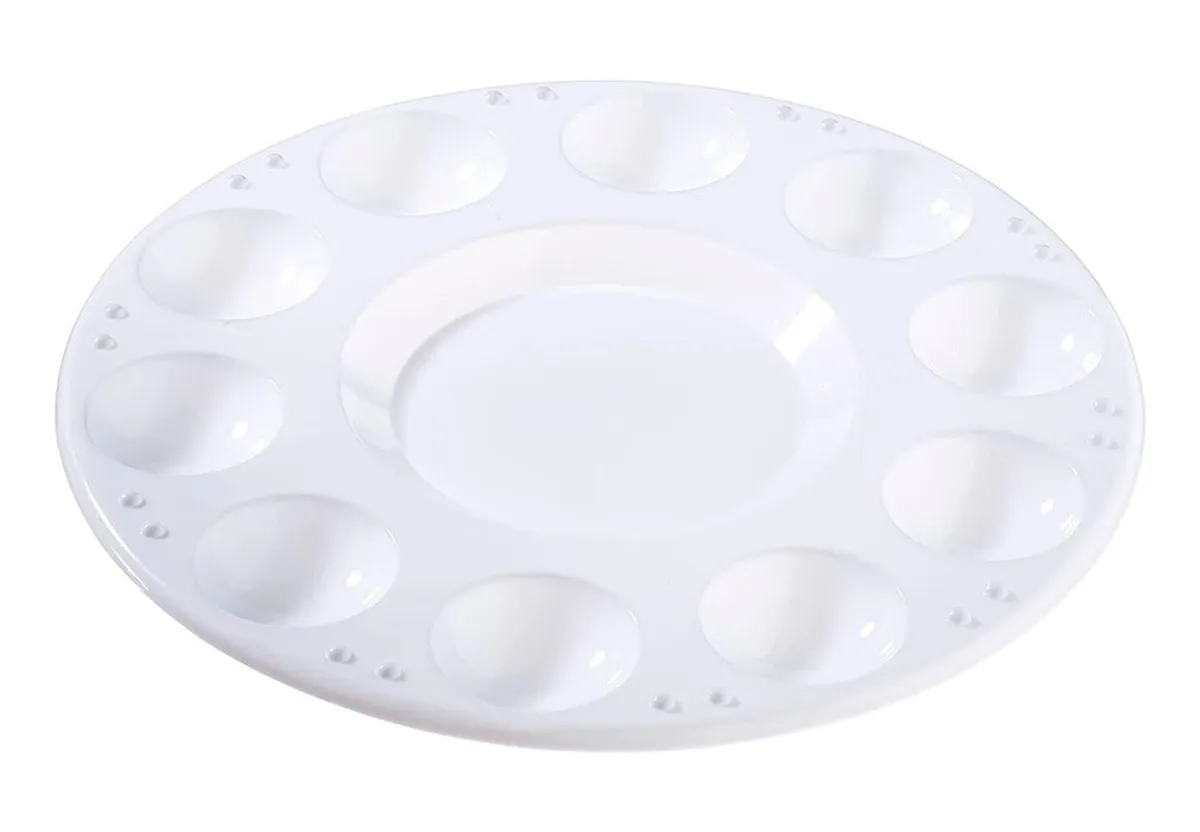
If you’re using a watercolor paint set, you can usually mix your paints in the lid. Some artists prefer to mix their paints separately in a palette to keep their paint set clean, but it’s up to you which way of working you find most convenient.
You can find more recommendations in our paint palettes guide.
4. Easel
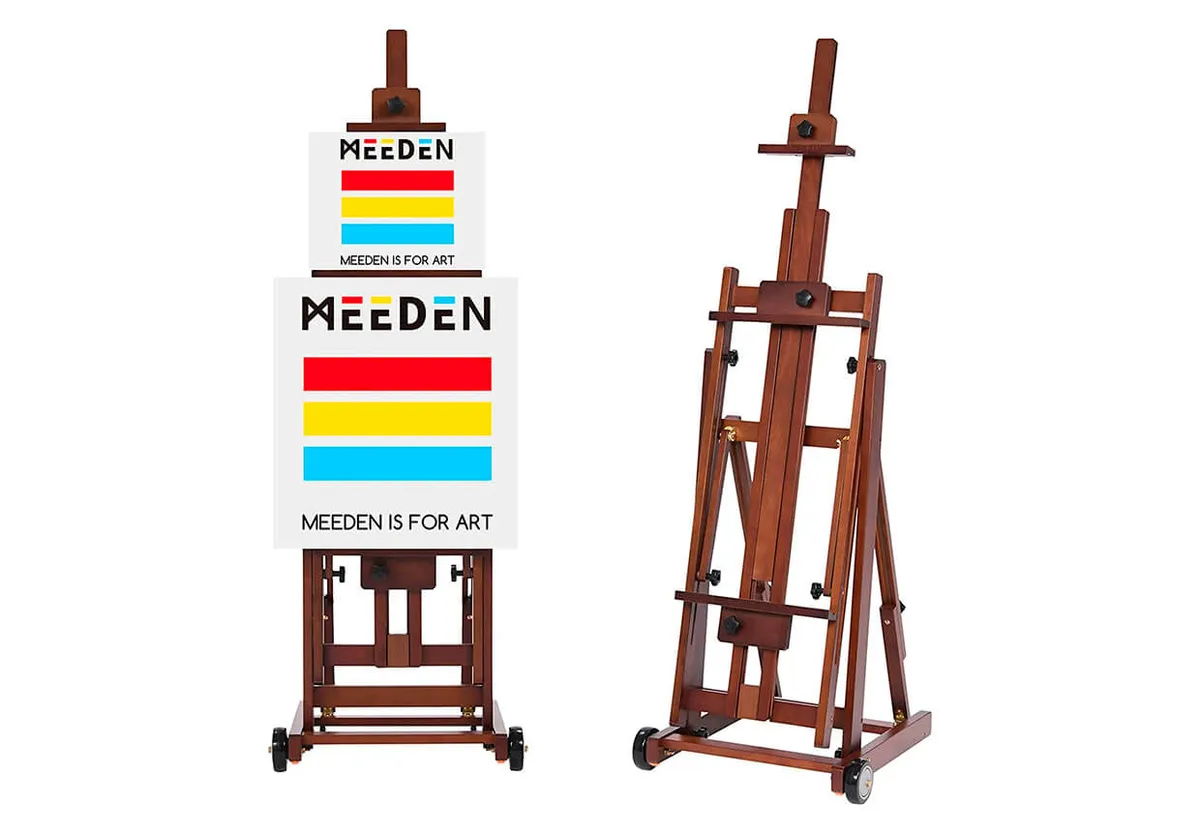
When you’re settling down for a long painting session, you can find that your back or neck gets sore because you’re leaning forward so much.
Working using an easel can help you to paint more comfortably for longer periods, but be aware that your paint may drip if you use too much water.
Check out our best art easels guide to find the right one for you.
5. Brush holder/rest
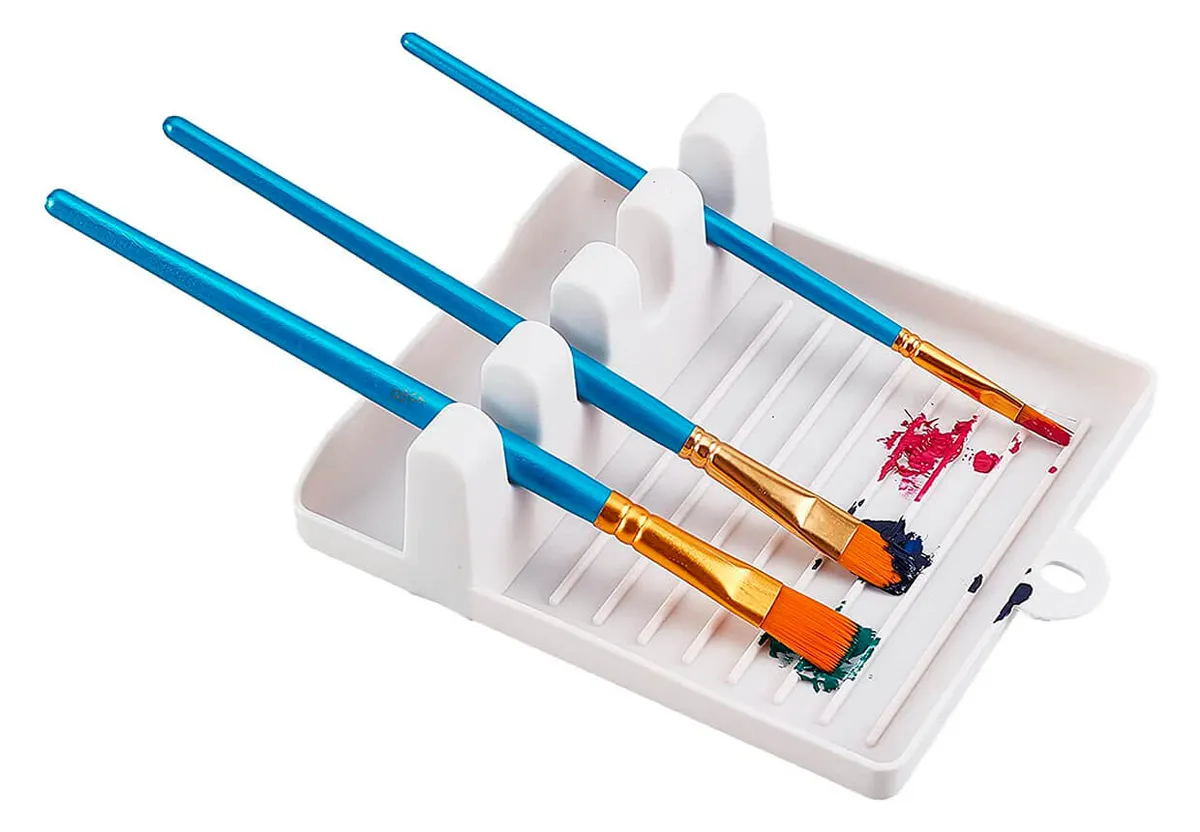
Keep your brushes in order when you’re not using them by propping them up on a brush rest. This one from GORGECRAFT comes with a drip tray, so they won’t make a mess if you need to set them down for a moment.
6. Drawing pencils
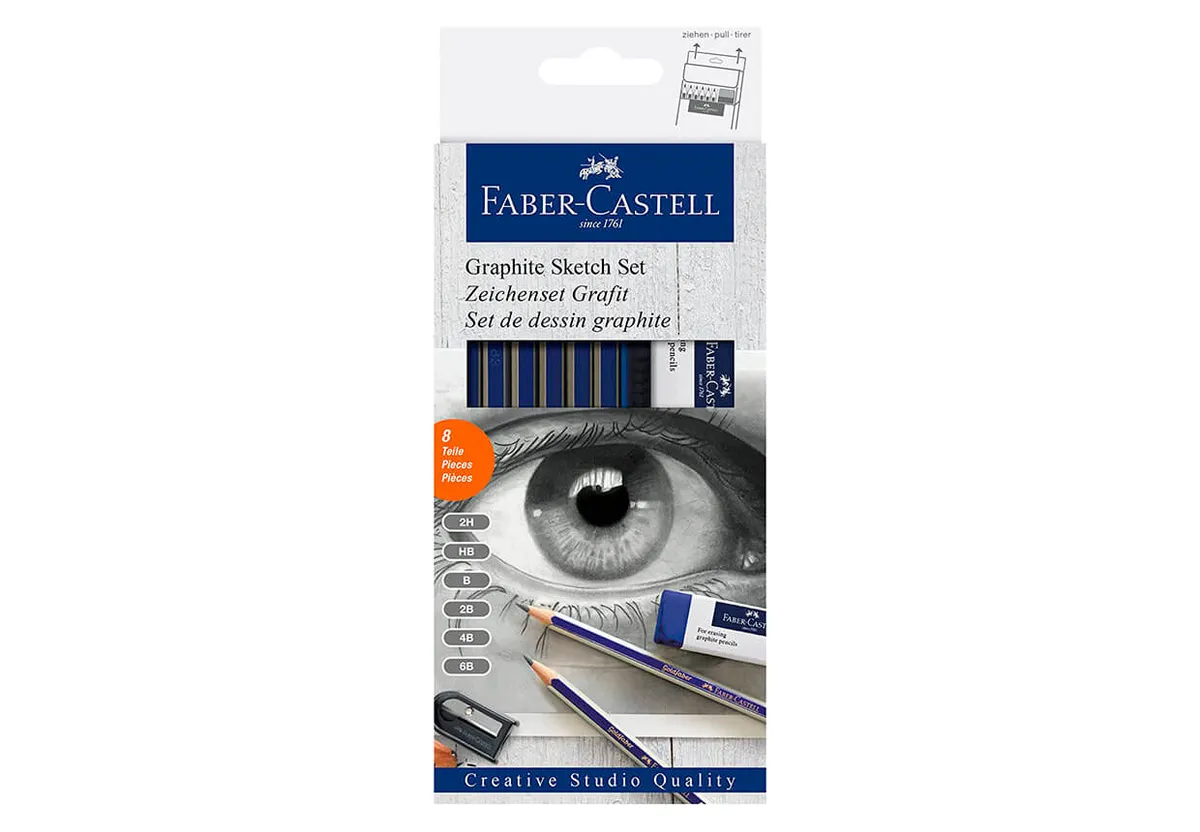
Drawing pencils can be used to sketch out your painting lightly before you begin, or you can use washes of watercolor paint to bring your drawings to life. However you like to paint, it’s useful to have some drawing pencils in your art stash.
Discover a great selection of sets to buy with our best drawing pencils guide.
7. Fineliner pens
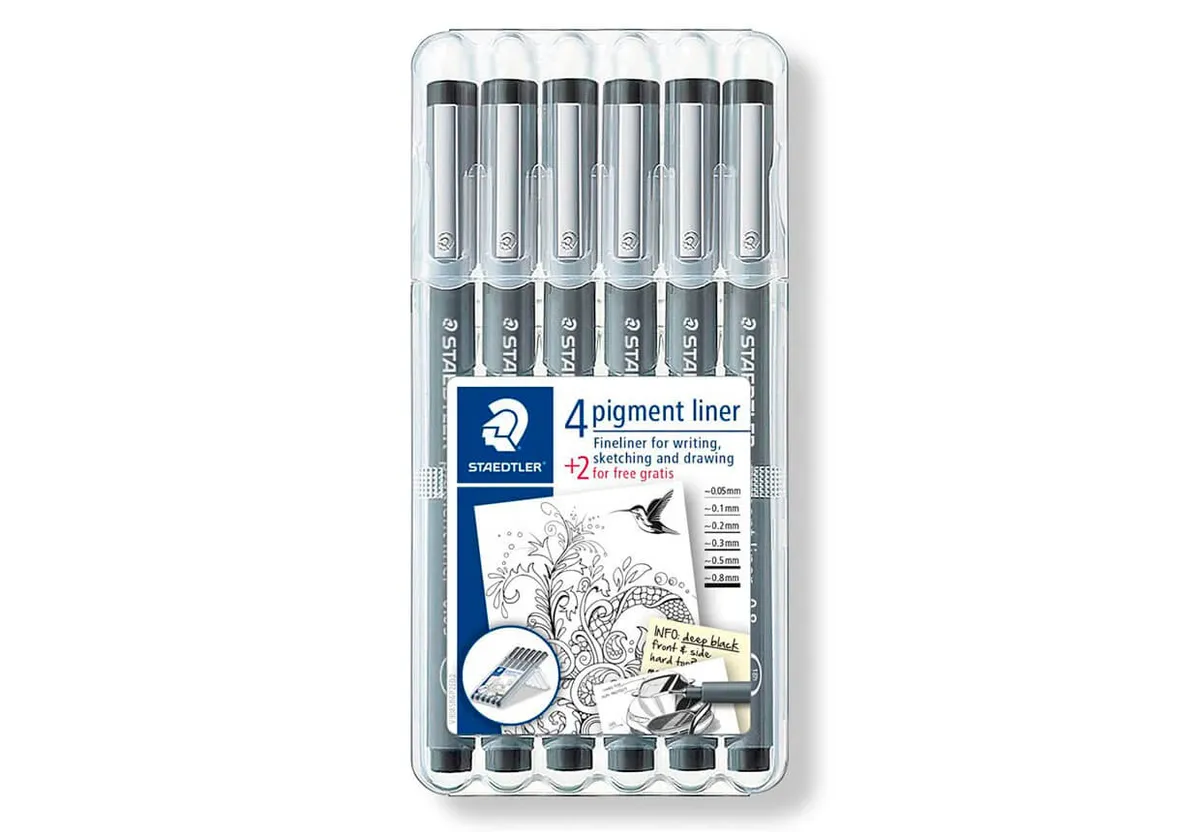
If you’re using the line and wash painting technique, you’ll need a good set of fineliner pens to hand. This set from Staedtler comes with a variety of nib widths, so you can find the right line thickness for your picture.
8. Daylight lamp
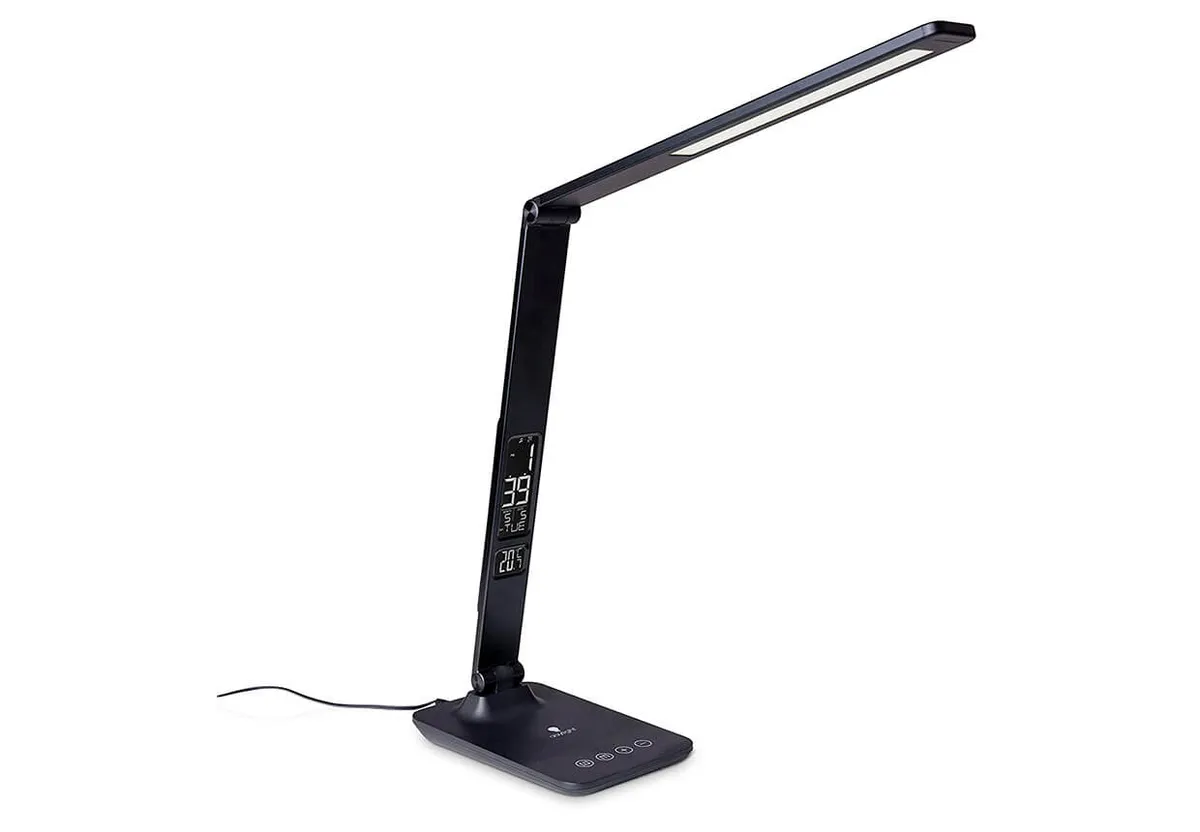
Prevent eye strain by using a daylight lamp. These lamps allow you to control the light levels in your working space and will stop your eyes from getting tired during long painting sessions.
Many daylight lamps can mimic natural light, which can help you to mix the right colors as you paint.
Choose the best light for you with our daylight lamps guide.
9. Water spritzer

A water spritzer is necessary for those occasions when you want to moisten your painting without drenching it. A spritzer or mister is a small but important tool for watercolor painters.
You can also use a spritzer to create deliberate drips of water on your painting if you like.
Try spritzing your watercolor paints using a mister too, as it helps to activate the pigment resulting in more intense hues. Leave the paints for around a minute after spritzing and you’ll notice that the colors are much more vivid when you start using them.
Watercolor painting is exciting for artists of all levels
Watercolor painting is a wonderful medium, whether you’re a seasoned painter or a complete beginner. There’s always something new to learn along the way!
In this guide, we’ve shown you how to get the most out of your watercolor painting materials, given you exciting projects to paint and revealed some inventive watercolor techniques for you to use in your work.
There’s always more to discover, which is just one of the reasons why watercolor painting is so popular!
Get into acrylic painting
Continue to develop as a painter by trying a completely different medium: acrylic painting. Acrylic paints are so versatile – you can thin them to a watery consistency or apply them thickly like oil paints.
Learn how to start acrylic painting with Gathered’s in-depth guide.
